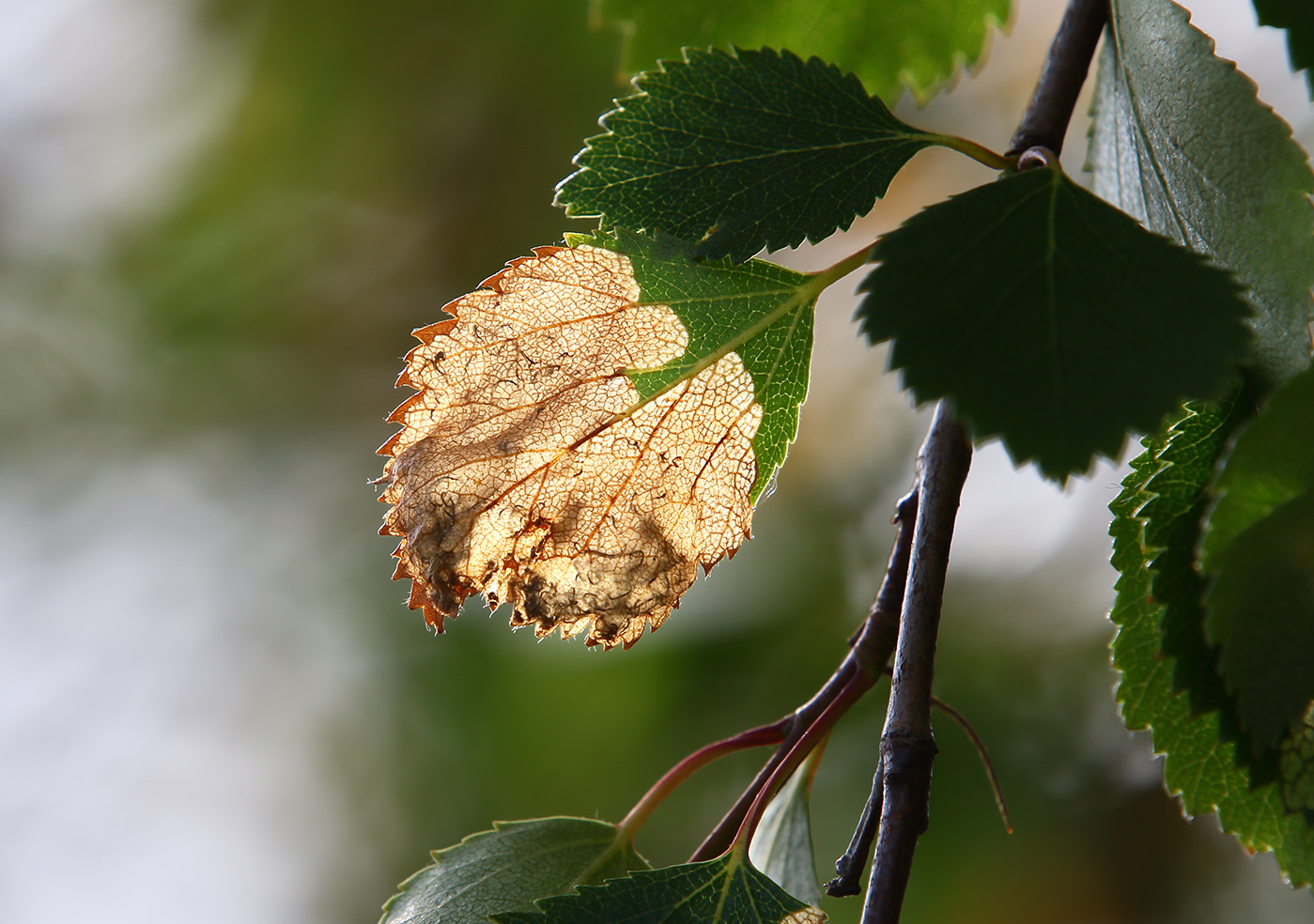A call for information on tree pests and forest health
10.07.2023

The white-spot purple larvae have been feeding on birch leaves in Akureyri, North Iceland, for the last few weeks but now they seem to have metamorphosed and flown away. Instead, the Scolioneura betuleti larvae are now taking their turn. Both species seem to be spreading rapidly across Iceland. Photo: Pétur Halldórsson
Now summer is reaching its peak and the ecosystem is in full swing. This also applies to the pests that attack trees and shrubs. As in previous years, the Icelandic Forest Service – Skógræktin is calling for tips from the public about pests on trees throughout the country, as well as about the general health of forests, such as effects of seasonal disruptions in weather or individual storms.
 The Icelandic Forest Research, a division of Skógræktin, collects information about the state of the country's forests. They are now requesting that people send information, especially if they notice any damage to the trees. In particular, people are asked to keep their eyes open for the effects of this spring's weather events on the trees in their vicinity, as well as for new pests appearing in different parts of the country.
The Icelandic Forest Research, a division of Skógræktin, collects information about the state of the country's forests. They are now requesting that people send information, especially if they notice any damage to the trees. In particular, people are asked to keep their eyes open for the effects of this spring's weather events on the trees in their vicinity, as well as for new pests appearing in different parts of the country.
For instance, pests such as the brassy leaf beetle (Phratora vitellinae) are attacking willows and poplars in new areas every year. Birch on the other hand is suffering from the attacks of two similarly behaving pests. On the one hand is the White-spot Purple (Heringocrania unimaculella) feeding on birch leaves early summer and on the other hand the sawfly species Scolioneura betuleti which follows around mid- to late-summer. Both now seem to be spreading rapidly across the country.
The scientists would be most thankful as well for photographs included with information about pests. Such material can prove very useful for confirming diagnoses. All photos will be saved in a secure database with relevant attribution. It is assumed that photos sent may be used in lectures (where the photographer is mentioned), but if there is a desire to use them for publication on the web or in published publications, special permission will be requested. Please note if you don't want the photos to be used publicly.
Brynja Hrafnkelsdóttir, expert in entomology at the Icelandic Forest Research, accepts information and data on pests via her email address, brynja.hrafnkelsdottir@skogur.is.
Text: Pétur Halldórsson
